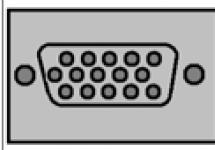A RAR file is a compressed archive. The archiver converts many folders and files into one smaller file. To view and use the contents of an archived file, you will need special file compression utilities (programs) that are compatible with this format.
Instructions
When archiving files using WinRAR, you can change several options for creating an archive, including splitting it into parts. Let's show it with an example.
Select any files on your computer, right-click on them and click on “ Add to archive…", as shown in the screenshot below.
A window with archiving parameters settings should open in front of you. In its lower left area, find the inscription “ Divide into volumes of size».

Here you can choose what size parts your archive will be divided into. You can enter your number and select a unit of measurement (byte, kilobyte, megabyte or gigabyte), or select one of the most popular values from the drop-down window - 5 MB, 100 MB, 700 MB, etc.

For example, we will choose 5 MB. To start archiving with division, click “ OK».

In the folder next to the original files, if you did not change the folder to save this archive in the archiving options, parts of your split archive will appear.

All volumes will be of the selected size except the last one - there will be so much left. For example, if the whole archive “weighs” 17 MB, then it can be divided into 4 parts, choosing the size of each 5 MB. In this case, the latter will be 2 MB in size (17-5-5-5=2).
We encounter archives that are divided into parts all the time today, and sometimes confuse inexperienced users. However, the process of merging files will not be a problem for you if you have special programs at hand.
You will need
- PC with Winrar or 7-zip installed, multi-volume archive.
Instructions
You will need
- 7-zip.
Instructions
Some archivers, for example WinRAR, allow you to create multi-volume archives, which, for example, make it possible to download the archive in parts. If a volume is damaged, you will need to re-download only this volume, and not all volumes of the archive (in addition, if recovery information is added to the archive, WinRAR sometimes allows you to fix damaged or even completely missing volumes of a multi-volume archive). Archivers that support multi-volume archives allow you to specify the desired volume size, so you can create volumes suitable in size for removable drives or the requirements of specific programs/sites. For example, you can create an archive with volumes the size of a CD/DVD, or in the mode of automatically determining volume sizes, archive directly onto removable media (for example, flash drives), so that when space on one media runs out, archiving will continue on another until it is created full archive. Another example of the use of multi-volume archives is associated with sending data over the Internet, for example, by e-mail. It often happens that a mail server allows you to attach several files to a letter, but the size of each file should not exceed a certain size. In this case, a multi-volume archive will come to the rescue. A multi-volume archive is an archive of computer programs and data, consisting of several parts (volumes), i.e. from several separate files. But, consisting of several files, such an archive is still a single archive, simply cut into several parts. Unlike simply several independent archives, there is an internal relationship between the parts of a multi-volume archive, allowing archivists to work with several files as if they were a single archive. You can successfully unzip a multi-volume archive only if you have all its parts, and it is highly desirable that these parts are in the same place (in the same folder); if at least one part is missing, the archiver will perceive the archive as damaged (under-downloaded). The main reason for all the problems that arise for users who are faced with a multi-volume archive for the first time is due to the fact that most beginners simply do not understand that they are dealing with something - something new to them, and it’s easier for them to think that this is a very ordinary archive that they have been able to work with for a long time. And their initial confusion very quickly gives way to indignation that for some reason something still doesn’t work. And they begin to search for the culprit... How to distinguish a multi-volume archive from several ordinary ones?
▪ in the Twinpix library - visually, by the color coloring of the file type (extension) (Windows with default extension settings does not show: Control Panel -> Folder Options -> View -> Hide extensions for registered file types. By unchecking the checkbox for this option, you can make file extensions visible). So, in the information message RAR format file (PART01) with a size of 100.00 MB, the RAR text is green, and PART01 is magenta (fuchsia, magenta):
▪ visually, by file name. All parts of one multi-volume archive created by the archiver always have similar file names. A distinctive feature of a multi-volume RAR archive is the presence of the .partNNN suffix in file names, where NNN is the volume serial number. This number can be seen at the top of the information window if you call it with the WinRAR “Show information” command on the archive volume; the number may be useful if files with volumes are renamed for some reason and you have to restore their numbering manually;
▪ by logical conclusions. If the user clearly indicates that he has posted parts of the archive, he must be believed.
▪ by mathematical calculations. If you open the first part (.part001) of a multi-volume archive in WinRAR and look at the “Information” about the archive, then “Size in archive:” will be larger than the size of this file and will be equal to the total size of all parts (files) of the archive. Unpacking a multi-volume archive :
▪ Install and configure WinRAR (so that when you right-click on the archive, the context menu that appears contains the items “Extract files” or “Extract to current folder”). If, when installing the WinRAR program, the context menu was not configured, then you will have to open the archive in the WinRAR program and select the “Extract to specified folder” option in the “Commands” menu.
▪ Download all parts (volumes) of the archive separately.
▪ In the root directory of the system drive (usually drive C:), create a folder with an arbitrary short (no more than 8 characters) name containing only Latin letters (case does not matter) and numbers, for example, ARCHIV.
▪ Place all parts of the archive in this folder.
▪ Check that there is enough free space on the disk for the unpacked archive.
▪ Unpacking the archive with preliminary renaming of parts of the archive. If there are many volumes (more than a dozen), then I recommend first renaming all the files so that their names match the XXX.rar pattern, where XXX is the volume number in the archive. Manual renaming is not so much a tedious task as it is tedious, but believe me, “Paris is worth a mass.” After renaming, the folder should contain files named 001.rar, 002.rar, ... (or 1.rar, 2.rar, ..., or 01.rar, 02.rar, ...). To batch rename files, you can use any suitable program, for example, the corresponding function of a file manager. Unpacking the first volume will automatically unpack the entire archive. If you are friends with Total Commander, then all preparatory operations will take very little time.
▪ Unpacking an archive without first renaming the files. Start unpacking from the 1st volume by using the context menu items “Extract files” or “Extract to current folder”, or by opening the archive in WinRAR and selecting the “Extract to specified folder” option in the “Commands” menu. When the archiver asks for the 2nd part of the archive, also known as the 2nd volume (this is how the unpacker’s information message “Insert disk part2” should be understood), specify the desired file using the “Browse” button. Next, follow the instructions of the unpacker; Ignore discrepancies in file names - required by the unpacker and actual ones: only the correct order in which the volumes are unpacked is important. The most important thing at this stage is not to mix up the volumes. For correctly named volumes, the “Browse” button will not be needed: unpacking the first volume will automatically unpack the entire archive. P.S. Keep in mind that the number of archive volumes depends on the total volume of files being archived and on the packer settings and is not directly related to the number of files being archived. In other words, the number of files obtained after unpacking the archive extremely rarely (and even then by chance) coincides with the number of parts of the archive. Good luck! You will succeed!
I think many people have encountered the fact that a file or folder exceeds the required size limit (for example, when sending an attachment by mail, uploading it to an FTP server, or recording it on any media), one solution is to archive the data, since it will help reduce the size folder or file. But if this is not enough and even the archive cannot be compressed to the required limit, in this case the file or folder can be divided into several archives of the required size.
This is what this article will be devoted to - how to split/split a file or folder into several archives using the Winrar or 7-Zip archiver.
Split/split a file or folder into multiple archives using WinRar.
We have a site folder that needs to be archived into several archives. To do this, right-click on it and select "Add to archive".
In the window that opens Archive name and parameters, in the " Are common", we see a field at the bottom left "Split into volumes of size (in bytes)", you can use the already specified parameters, for example, if you want to save to a floppy disk (although I think this is no longer relevant) or CD. If you are not satisfied with the prescribed sizes, you can specify your value, just remember that the value is indicated in bytes!!!
Let me remind you:
1 Kilobyte (1Kb) = 1024 bytes,
1 Megabyte 1 (MB) = 1048576 bytes,
10 Megabytes (10 MB) = 10485760 bytes.
Accordingly, if I want to make archives not exceeding 10 MB. You must register 10485760.

Click "OK". As a result, I ended up with several archives whose size does not exceed the specified value of 10 MB.
Split/split a file or folder into multiple archives using 7-Zip.
Right-click on the file or folder you want to archive and select "7-Zip-Add to archive".
In the window Add to archive there is a box at the bottom left "Split into volumes of size (in bytes)", in this field we select or enter the required size, in this case I want to split it into archives of 10 MB and there is a specified size, so I simply select it (you can also enter 10485760 - the result will be the same)

As a result, several archives appeared that did not exceed 10 MB.
In order to correctly open the created archives, you need to place them all in one folder and open the first archive.


